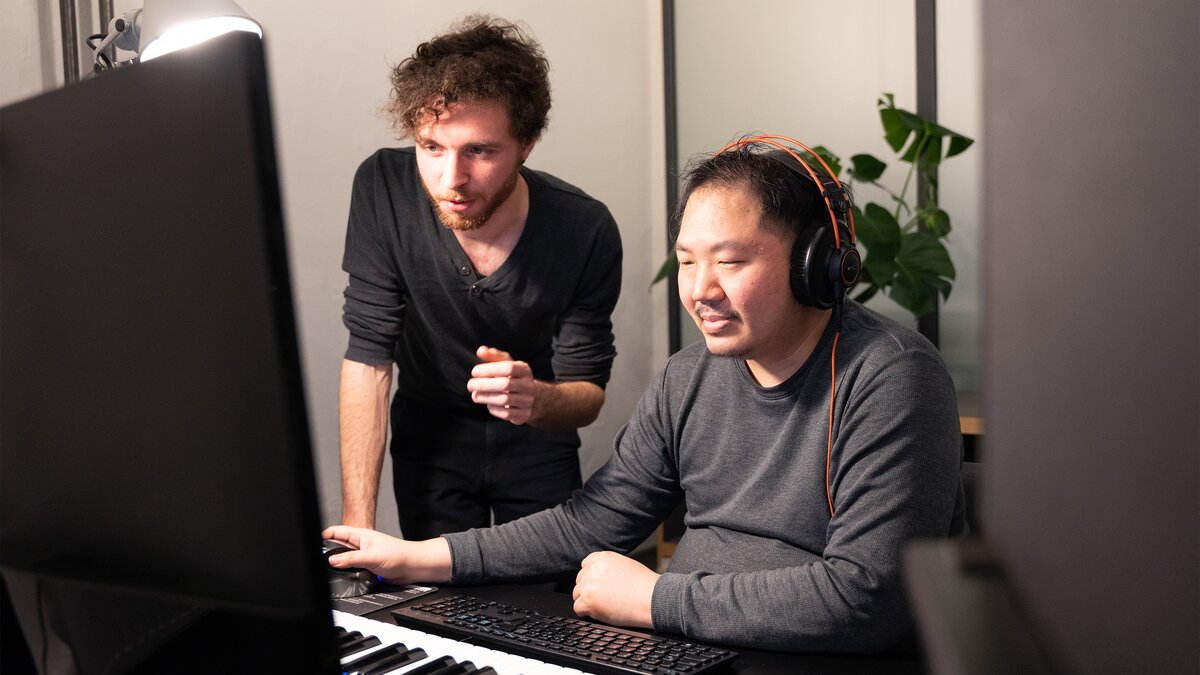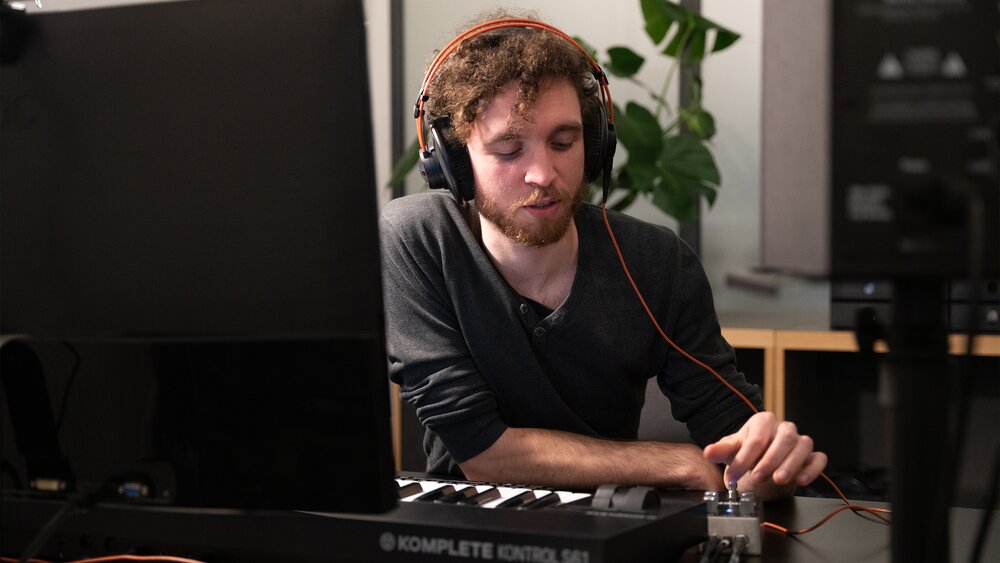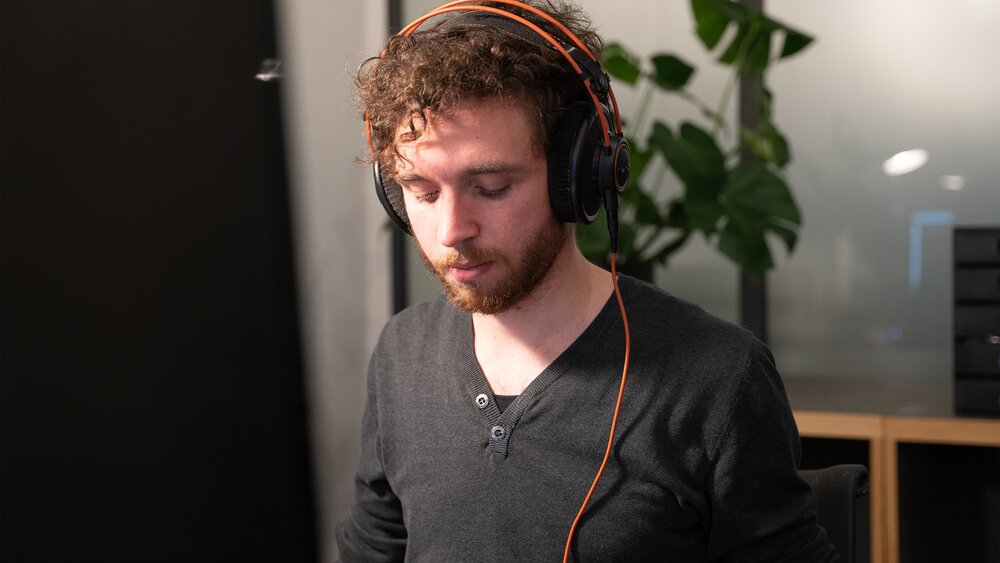
Frederik Theyssen’s love of acoustic instruments and modern sound design, combined with a desire to generate a distinctive pool of sounds for his own projects, led to the birth of the Creative Soundpacks series in 2020. With forest percussion, a shamanic ritual ensemble, and Chinese theater drums among some of the sounds sampled for the series, it’s clear that Theyssen is someone for whom inspiration is everywhere.
"When I hear a sound in my head that I’d like to use in a piece of music the sound designer in me really starts to get going. I’ll imagine myself working on a certain project and then ask myself what sound sources I would like to use in it. A lot of music production is problem-solving so then it becomes about what steps to take to get that sound that I’m imagining."
This time around, the sound that Frederik was hearing in his head was a softly performed wind quartet, possessing a delicate, intimate character that spans the range from tonal to textural—Whisper. Included in the pack are a flute, a bass clarinet, a muted cornet (trumpet), and a flugelhorn. All four instruments come with a wide range of unique articulations and three mic positions. As with all the Creative Soundpacks, Whisper gives you a rich and distinct sonic palette for scoring, sound design, and music production. We spoke to Frederik to find out more.
Each Creative Soundpack has its own unique and thought-out concept. Where did the initial idea for Whisper come from and what was your ambition with the library?
The individuality of each soundpack is something I’m very proud of, especially as with Whisper the Creative Soundpacks are in double digits now! Listening to experimental music inspires me a lot, as do the conversations I have with other musicians working in similar spaces to myself. The core of the idea for Whisper originally came from a colleague of mine, Sascha Knorr. His idea overlapped with a concept that had been playing on my mind for a while. The goal was to capture wind instruments playing a very delicate and soft legato in a dry studio setting, and provide users with the potential to create unique textures by layering these instruments together. This type of sound is extremely versatile, and could be used in anything from modern film scoring to pop music.
With the Creative Soundpacks in general it’s all about coming up with concepts that have a bit of a story to tie the instruments together. A more recent example of that would be Umbra, which features some traditional South American instruments combined with a male humming vocal, which is a bit of a quirky combination! We also tried to include some very atypical articulations along with more basic patches like Legatos, so the overall package is very unusual.
How did you capture the really quiet sounds of Whisper?
There are a few factors involved in the recording of each Creative Soundpack—you need the right musicians, a good recording space, and an engineer with a good ear who can accurately place the microphones to capture what is essential to the sound. The wind instruments that we recorded for Whisper—a flute, a muted cornet, a flugelhorn, and a bass clarinet—are played so softly that it required extremely close miking to capture them correctly. With the help of Tom Rußbüldt we managed to achieve a really intimate character across three mic positions for each instrument, so I’m very thankful for his expertise.

Did you process the sounds much once you’d captured the performances?
The instruments themselves were carefully edited and mapped for SINEplayer without any further processing to give users flexibility to shape the sound any way they want to. Each of the close mics were provided separately which allows for a lot of freedom to alter the sound when mixing, as the sound differs quite a lot even in slightly different configurations. For the sound design I work mostly in-the-box. I have a Lindell Audio 500 Series Lunchbox and for plucks and keys I occasionally use some compression, EQ, and a Rupert Neve Designs 542 tape emulator that I haven’t yet been able to replace with plugins.
The most important step in the sound design process is EQing, and it’s definitely the thing I spend the most time on. As well as balancing frequency profiles you can completely change the focus and character of a sound—a stick hitting a tree can become a unique organic pluck by making a narrow boost at specific frequencies and wider cuts around it. The great thing is you can use the native EQ on your DAW too, so you don’t need to spend loads of money on expensive EQ plugins!
You’ve mentioned in the past that you love the ‘multi-voice’ aspect of music production. How does this influence the way you build your Creative Soundpacks?
The sheer scope of what you can achieve in modern music production with just a laptop is incredible. When I’m putting together a Creative Soundpack I always make sure that I’m creating a wide range of avenues for users to go down when they’re using it. In other words, there should be percussive, textural, melodic, and ‘chordable’ articulations or sound design considerations in each collection. Having this kind of variety in the packs means that you can cover every aspect of a piece of music. You only have to listen to some of the demos for the Creative Soundpacks to hear how this works in practice, as most of the composers use only the Soundpacks themselves to create the tracks. It might take a bit of creativity, but you can pretty much achieve anything you want to with these packs.
What are the benefits of using virtual instead of live instruments in music production?
Using virtual instruments allows you to create music that is just not possible to record live. Take the intro that I composed for another Creative Soundpack, Babel, which contains a mix of studio voice textures. For this track I used only the first syllable of the alto singer repetitively. The result intentionally sounds like it’s sampled, to give the human voice an electronic characteristic. I love exploring this balance of organic sounds and extreme precision.
At the same time it can go the other way too, and the human voice is a great example of that. I’m pretty sure there’s no virtual instrument that’s able to perform a melody using words from custom text that can achieve anything near the result you would get from an actual vocalist. There is simply a barrier for all sampled instruments where you can’t replicate every possible sound there is. Especially if you start to experiment playing the instruments in ways that they weren’t intended for.
